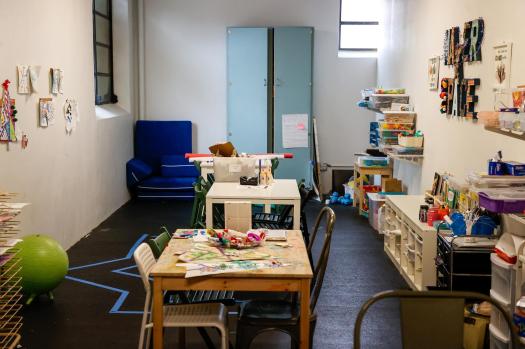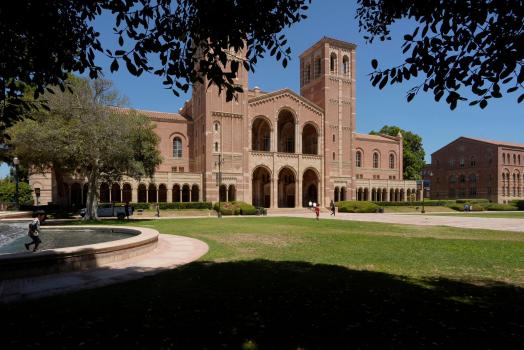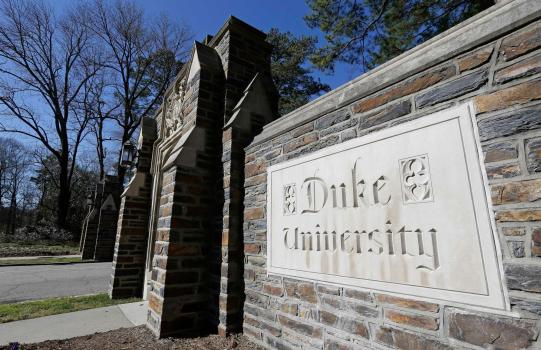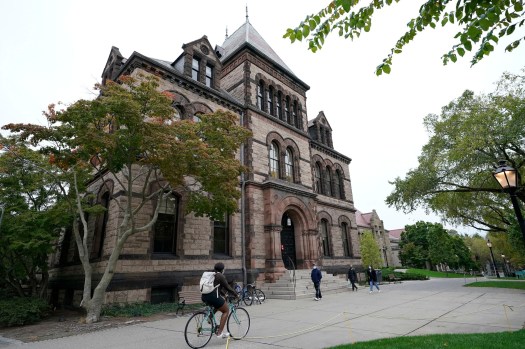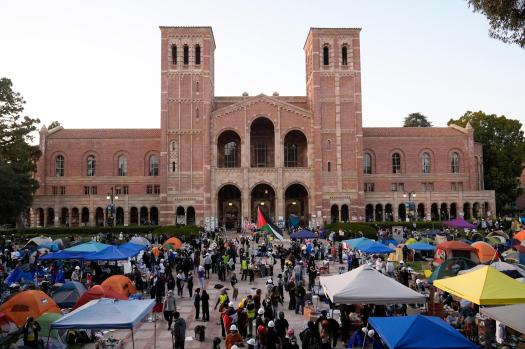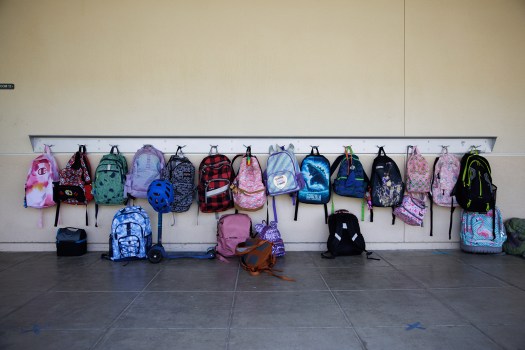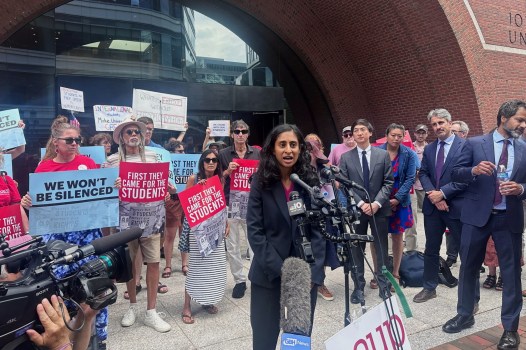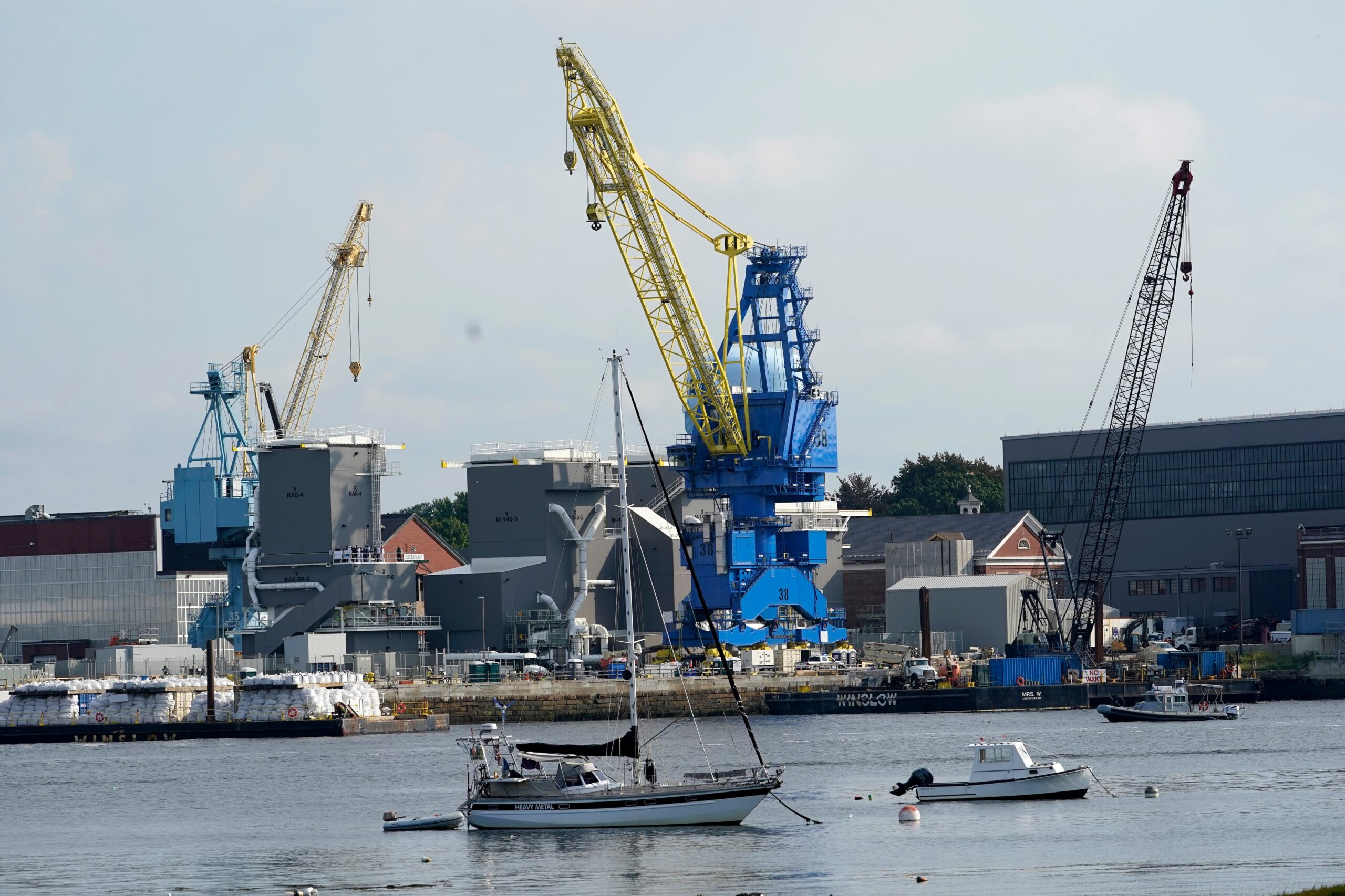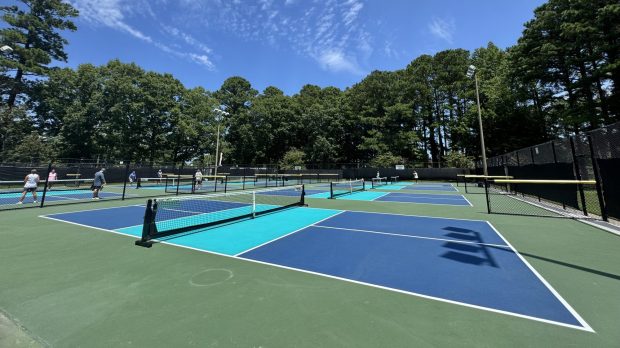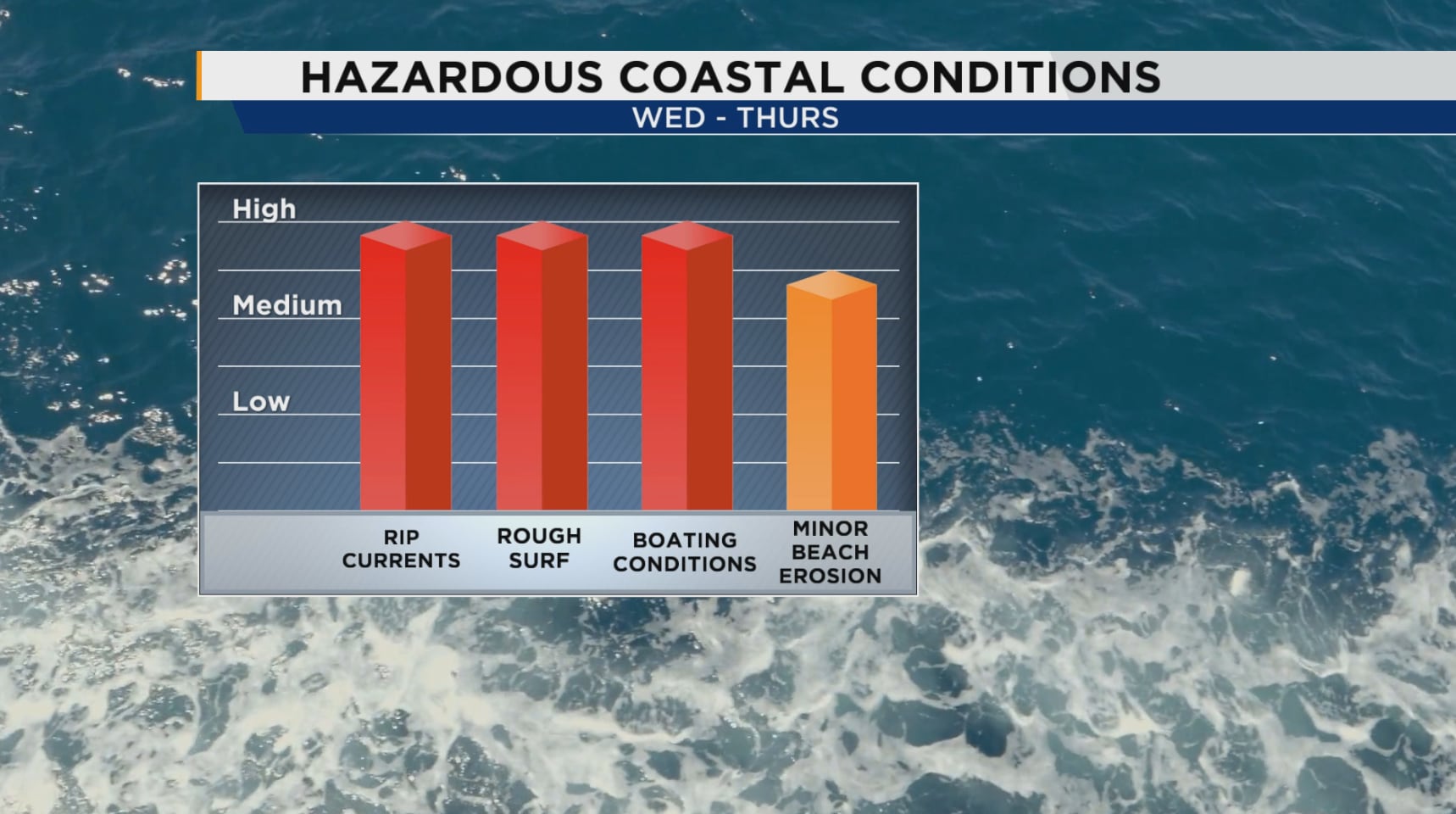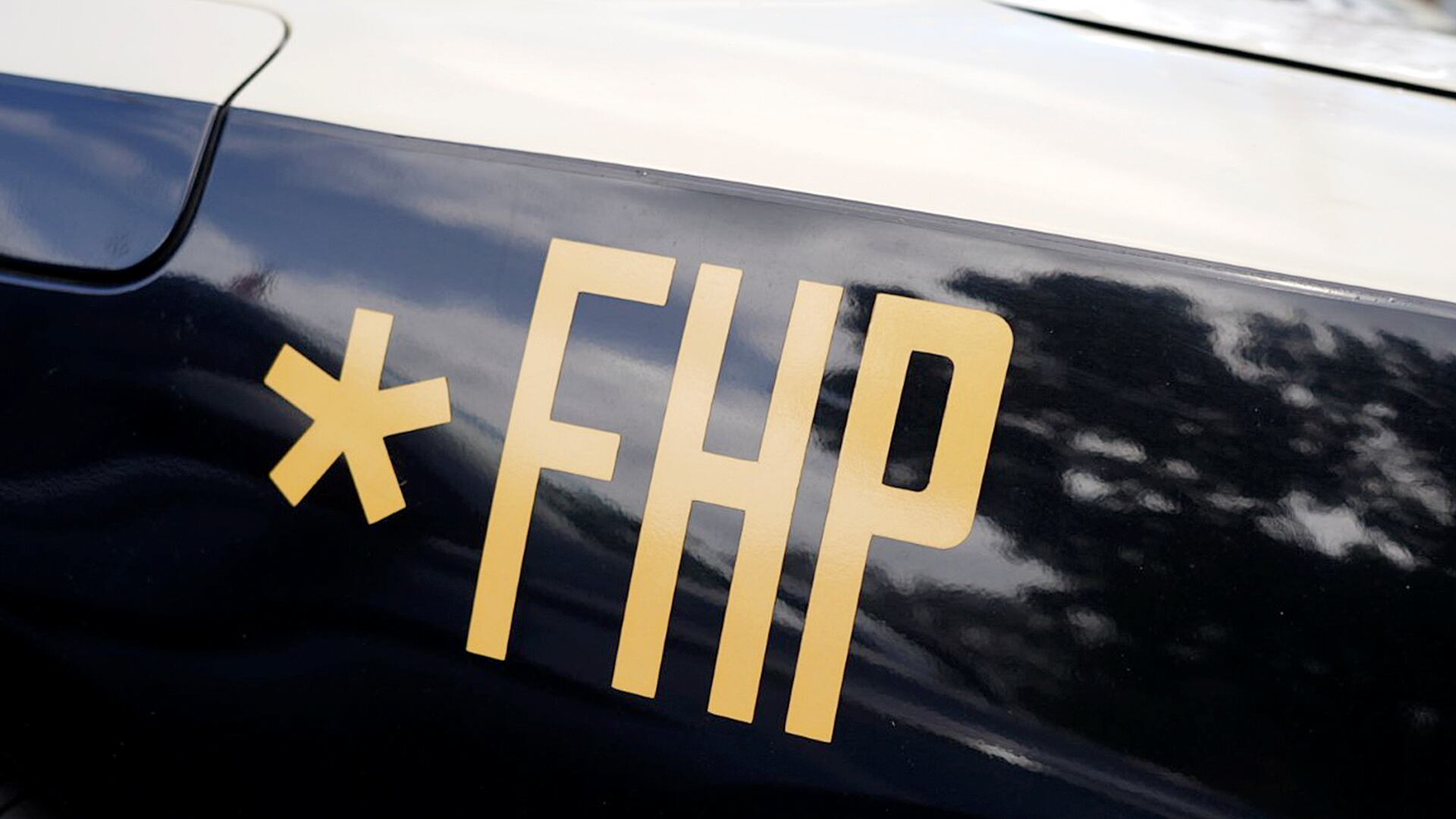From Stateline.org, by Robbie Sequeira
There was no commonly recognized name for Siri Fiske’s tiny, one-room schoolhouse model when she established the Mysa Microschool in Washington, D.C., in 2016.
Related Articles
-
Some workers would be excluded from student loan forgiveness program for illegal activity
-
Critics say Trump s push for fairness in college admissions is leaving out legacy preferences
-
FHP: 5 arrested, turned over to Border Patrol after traffic stop near Apopka High
-
For these incarcerated students, online school has been a disaster
-
Multiple Texas students are injured in a school bus rollover crash on the first day of class
Since the COVID-19 pandemic, Fiske has witnessed a developing microschool trend, and the school is now listed on its website as one of the first microschools in the country.
Microschools and homeschooling have become more and more popular alternatives to standard public and private schooling models in the five years since remote schooling during pandemic-era lockdowns. Parents are drawn to smaller class sizes, customized learning environments, and a lack of uniformity, according to Fiske.
According to Fiske, there is a misperception that all microschools are the same and that those who start them are doing so for cultish or religious purposes. I have witnessed my pupils earn admission to prestigious universities. Academic success can be attained in a variety of ways.
However, the expanding movement has alarmed some education professionals. They worry if microschools would drain funds from the public education system and whether they are appropriately supervised and held accountable.
States are left to define microschools as there is no federal definition and the Trump administration intends to close the U.S. Department of Education.
Microschools in several states are in a difficult situation since, in order to function as private schools, they must adhere to personnel, building, and curriculum requirements that are frequently too expensive for institutions of their size. They are subject to inspection, evaluation standards, and reporting obligations that aren’t intended for educator-led or multifamily models if they follow homeschool regulations.
To formalize microschools’ operating rights, some states, including Georgia, Tennessee, and Texas, have enacted Learning Rights Protection Acts.
If learning pods and microschools employ teachers, involve multiple families, or offer compensation for child care, they may be subject to child care or private school licensing regulations in Illinois, Maine, Massachusetts, and Oregon.
Back then, I wouldn’t have referred to schools that brand themselves microschools as such. But that seems OK to me. “It’s changing,” Fiske stated.
She credited states like West Virginia and the national school choice movement with fostering the growth of the microschool movement.
One of the only states to clearly distinguish a microschool from a private school, homeschool, or learning pod was West Virginia in 2022.
From whether a school is required to employ trained teachers to how it guarantees student safety or civil rights protections, these classifications and the funding and regulations surrounding these institutions have an impact on everything. Furthermore, others contend that states must define private or hybrid schools and their role in the ecosystem since more public funds are going to these options through vouchers and education savings accounts at the expense of public school financing.
According to Wead James, senior director of K-12 education policy at the left-leaning policy think tank Center for American Progress, states will need to close the gaps.
Accountability varies greatly. According to James, certain microschools are exempt from requiring licensed teachers, yearly examinations, or even a guarantee of civil rights safeguards. There must be some degree of supervision and accountability if public voucher funds are being used to support a microschool.
Many proponents contend that microschools are intentionally difficult to categorize. The CEO of the business association National Microschooling Center, Don Soifer, warns legislators against hastily enforcing set legal definitions.
The rate of innovation is too rapid. “It becomes obsolete the moment you define it in law,” Soifer stated.
The National Microschooling Center’s 2024 sector studyAccording to one of the few national data sources on the subject, a large number of schools are not following the rules of traditional education.
More than 60% of founders of 400 microschools in 41 states who participated in the poll said they did not currently hold a teaching license. Of those surveyed, 84% said their schools lacked accreditation. Of the potential founders, 23% are parents establishing schools for their own children, 32% are from non-educational sectors, and 48% are licensed educators (although only 14% actually work in public schools).
According to the data, the majority of microschools (55%) are governed by homeschool legislation, while the remaining 37% operate as private schools, 6% are charter schools, and 3% are classified as unique state schools.
According to James, you can operate a homeschool or private microschool program in which you are exempt from having to hire certified teachers for your pupils or administer yearly tests.
Often referred to as small-scale learning communities or homeschool hybrids, microschools typically serve 16 kids or fewer and target local families with average or higher earnings. Microschools are permitted to receive public financing through voucher programs in certain states.
Microschools may charge tuition, like private schools, which some critics point out could exclude lower-income families and exacerbate educational inequities.
The National Microschooling Center reports that these schools frequently function in commercial buildings (41%), private homes (28%), or places of worship (25%). The center also discovered that the movement is becoming more diverse: compared to 27% of present operators, 37% of potential founders are people of color.
Many operators might not be aware of the additional expenses required to comply with school requirements because zoning and building regulations differ from state to state and locality to locality. Fiske remembers the challenges of moving from Washington, D.C., to Vermont, where water fountain regulations are more stringent.
Because the requirements to open a licensed school are so stringent, the majority of persons in the United States who start microschools do so covertly, according to Fiske. “It took forever for the new school, and we had to install water fountains and ADA-compliant toilets for just 10 kids in Vermont,” she recounted.
Additionally, microschools function in a legal limbo, frequently being outside of the conventional K–12 system and being governed by a patchwork of municipal and state laws that may either encourage or impede their expansion.
In conservative states like Arizona and Florida that have strong school choice policies, growth has increased. Some states, like North Dakota, New York, and Maryland, have more stringent legislation governing private schools or homeschooling.
Microschooling is a multifaceted phenomenon. According to Soifer of the National Microschooling Center, these institutions have diverse appearances in each state and are surrounded by extremely various policy frameworks.
A microschool can be as little as 10 students in a Kentucky basement or as large as a schoolhouse with 200 students.
According to Fiske, legislatures must make it clear to parents and operators what to anticipate in a given state and assist eager operators in obtaining the training and business savvy necessary to successfully manage the schools.
According to Fiske, many millennial parents who may not have received any teacher training are the ones establishing microschools in the United States because they wish to establish a learning environment for their kids and other members of the community. Additionally, some of these will fail if the state doesn’t make an effort to offer incentives for obtaining accreditation and information as a small business and a school.
Justine Wilson declined a lucrative leadership position at a prominent private school after twenty years of employment in traditional schools in the US and abroad, including in Brazil, Egypt, and Qatar. Rather, in 2023, she established Curious and Kind Education, a two-day-per-week microschool in Sarasota, Florida, centered on self-directed play, nature-based learning, and trust.
According to her, word-of-mouth is the main source of enrollment at Curious and Kind. There is presently a waitlist for the program. Additionally, Wilson’s student body has grown from 18 in her first year to about 100 in the next academic year.
She replied, “It’s shocking how many 5-year-olds are on my waitlist.” It dawned on me that these kids are COVID babies, and their parents have been spearheading the hunt for alternative education since the outbreak.
According to James of the Center for American Progress, traditional public schools, which continue to educate over 80% of kids, are generally of a higher caliber than microschools. Families could believe that school choice options are of higher quality, she says.
We have given the impression that choice equals quality, and I believe that many families are looking for a variety of options because they believe that to be the case. However, she noted that this does not necessarily imply that the pupils’ new location is superior to their previous one.
According to James, we must examine what we are offering families more closely. It goes beyond simply having choices and alternatives. It all comes down to having high-quality options.
According to Soifer, microschools are aiming for that attribute.
According to him, microschools perform exceptionally well at the top end of the economic spectrum, on the left, and at the lower end of the income spectrum. It ultimately comes down to a new way of thinking about education and the new economy.
States Newsroom, 2025. Go to the website stateline.org. Tribune Content Agency, LLC is the distributor.
